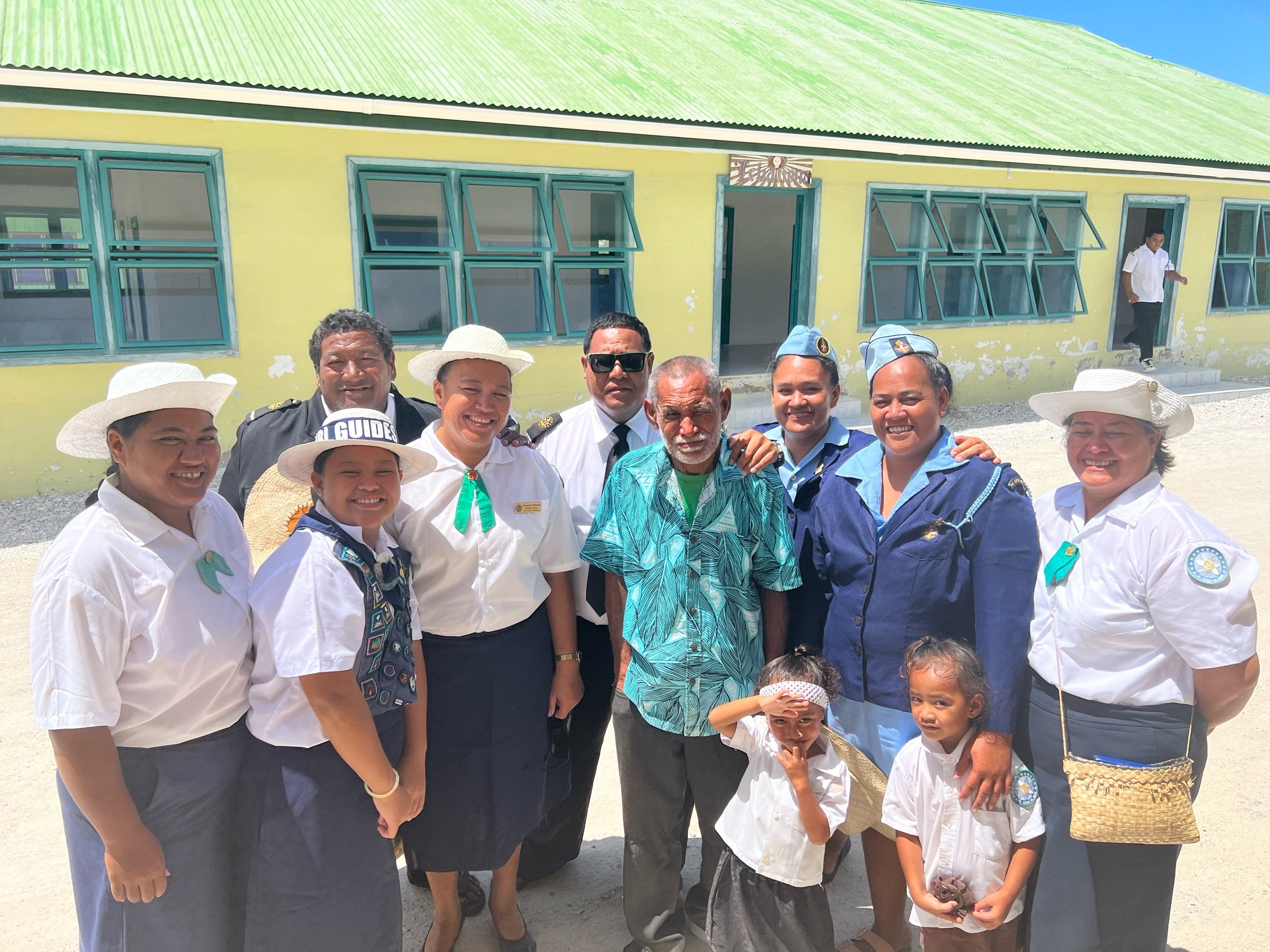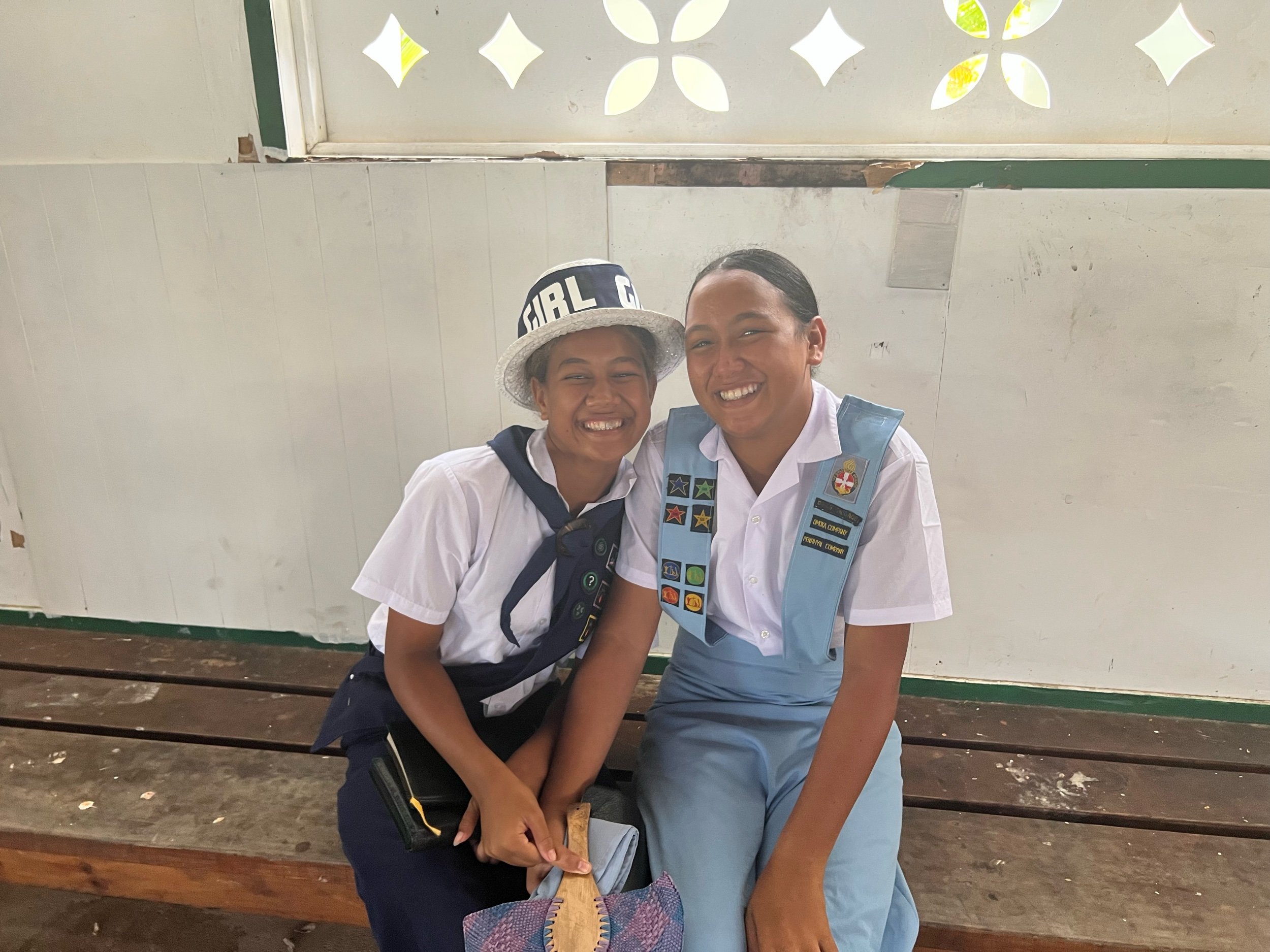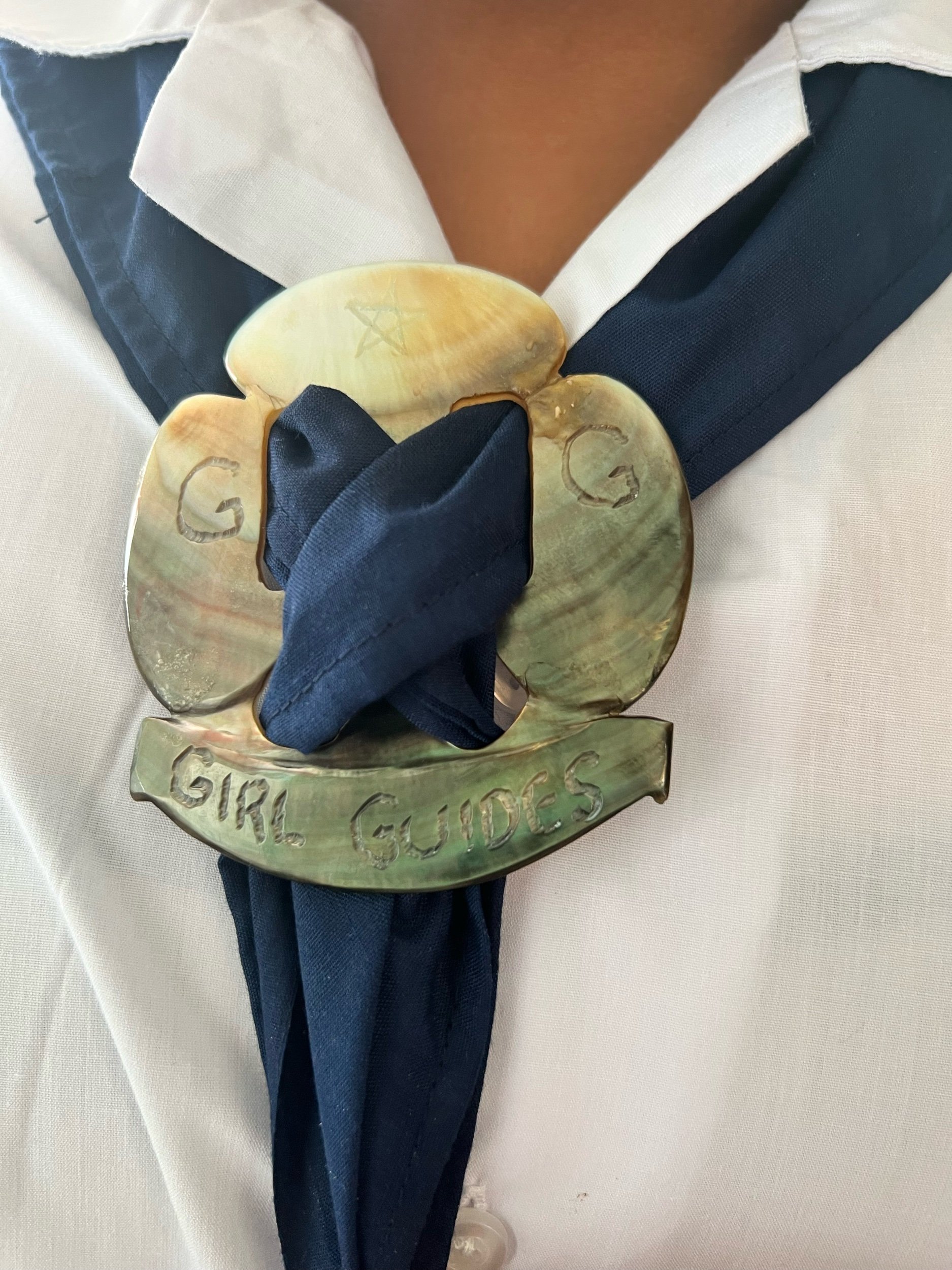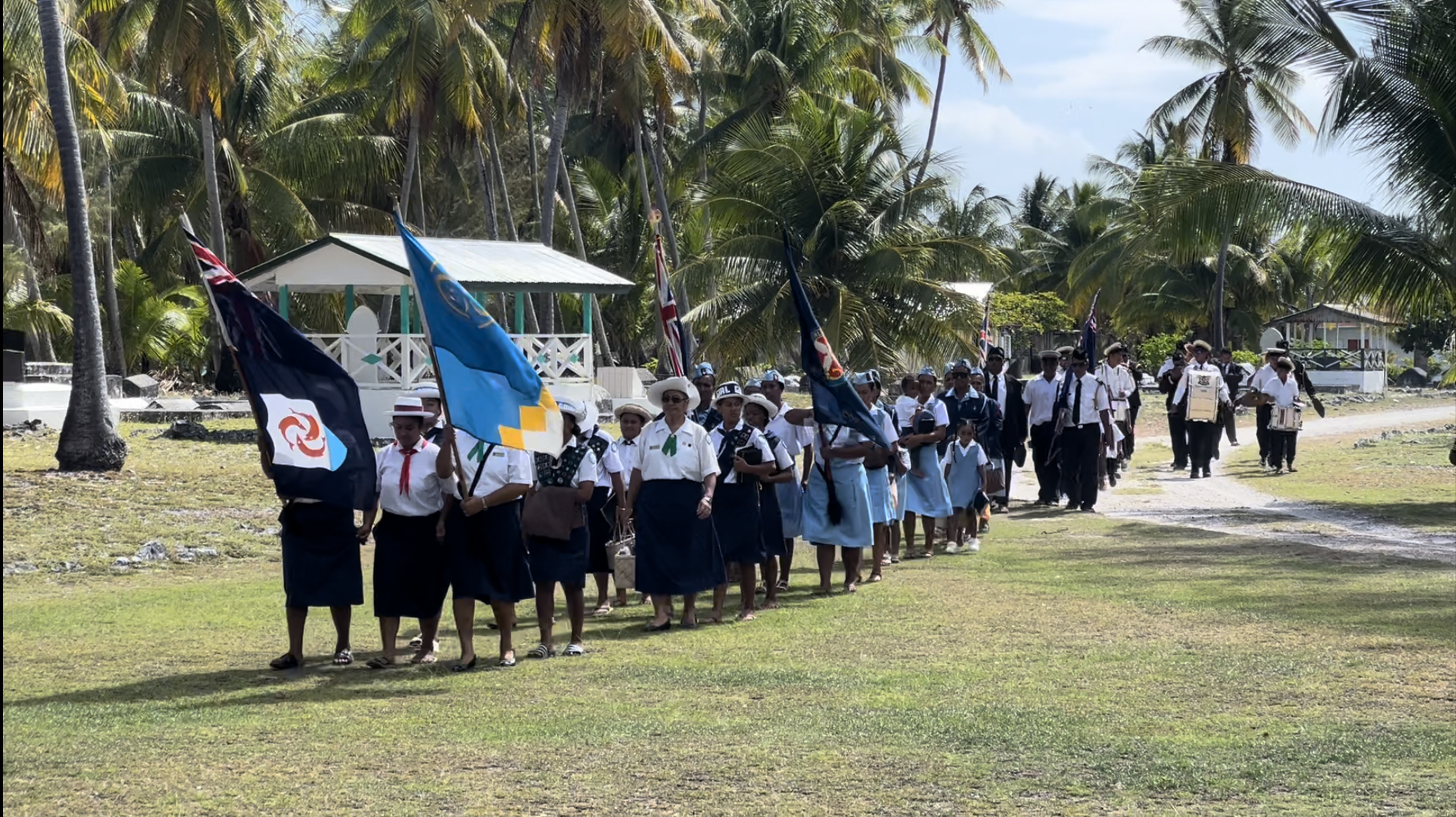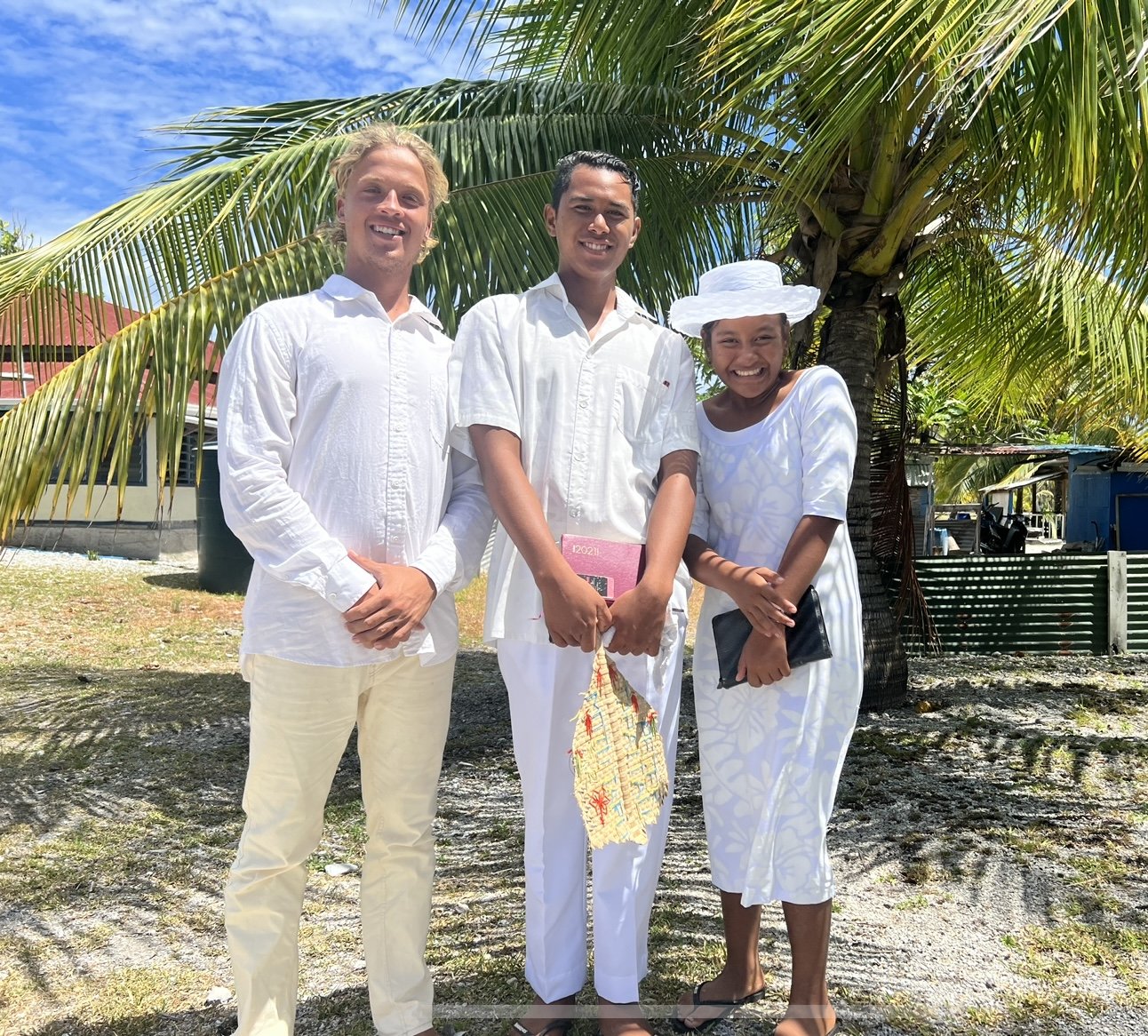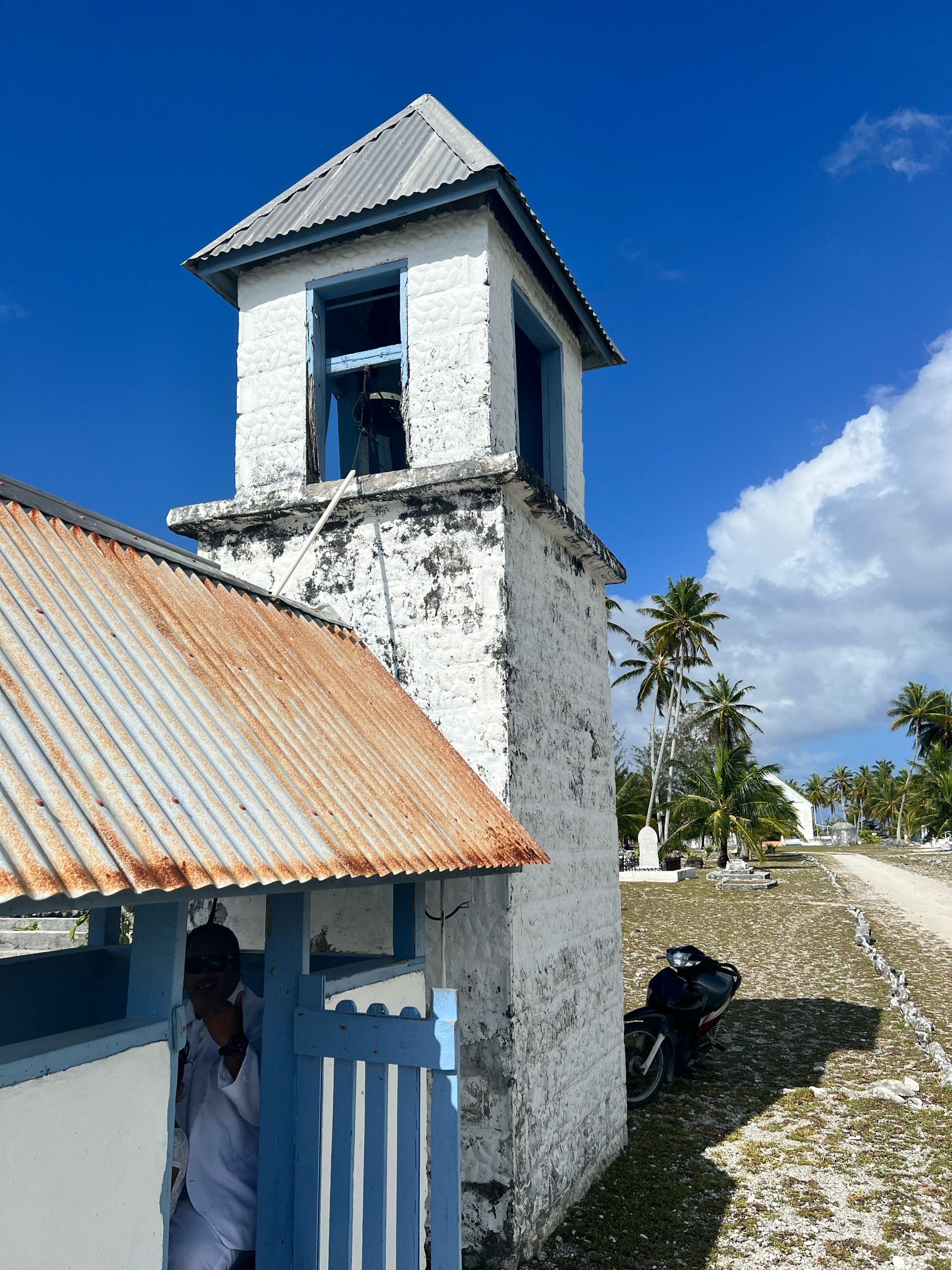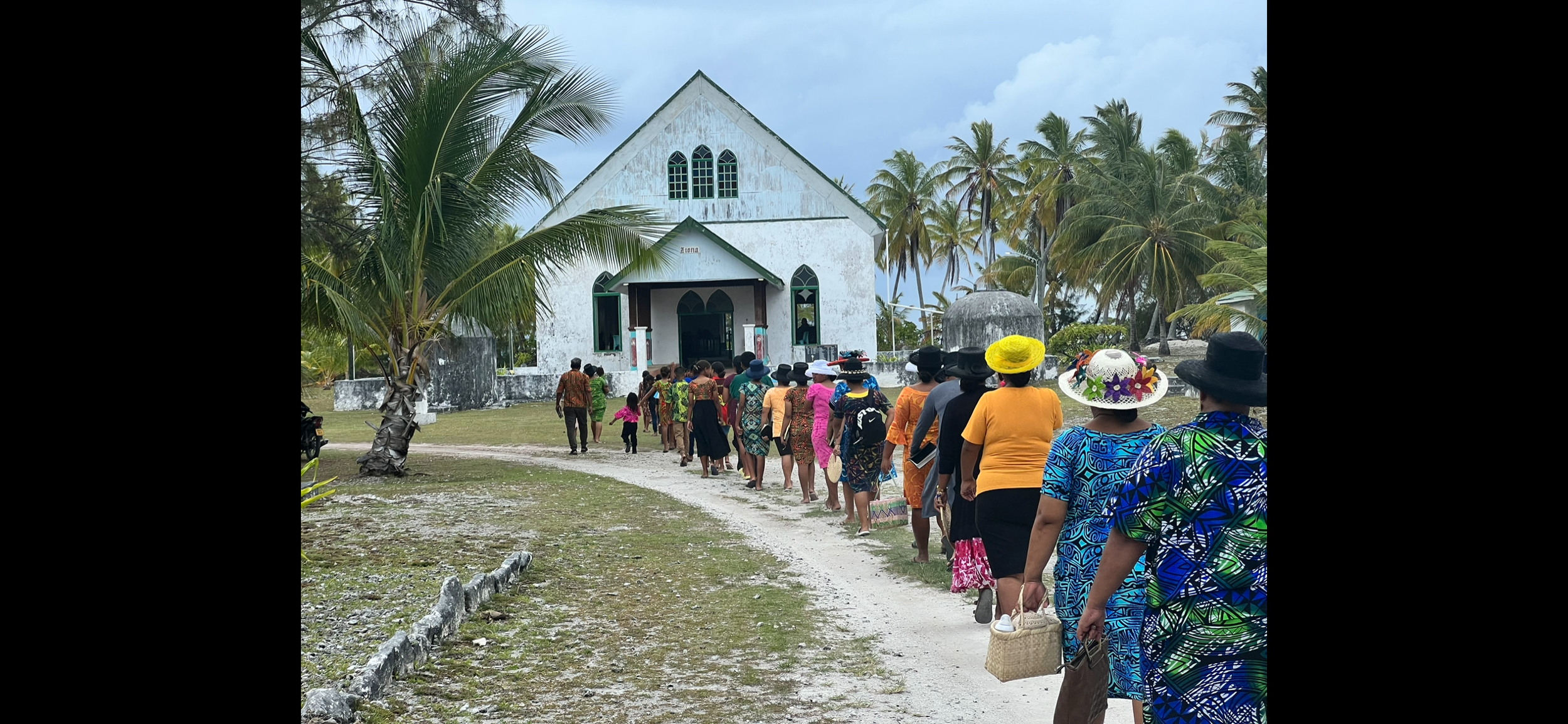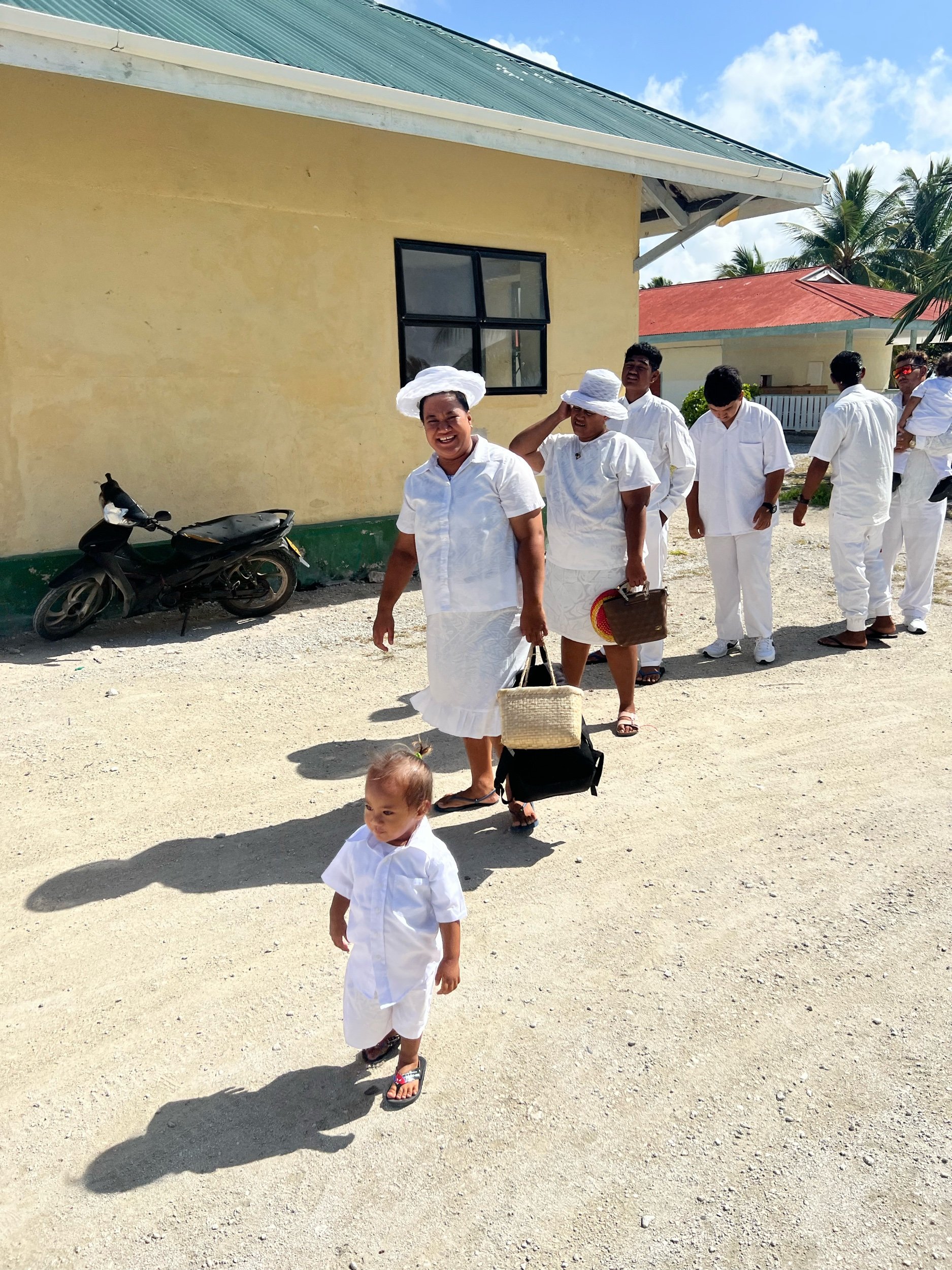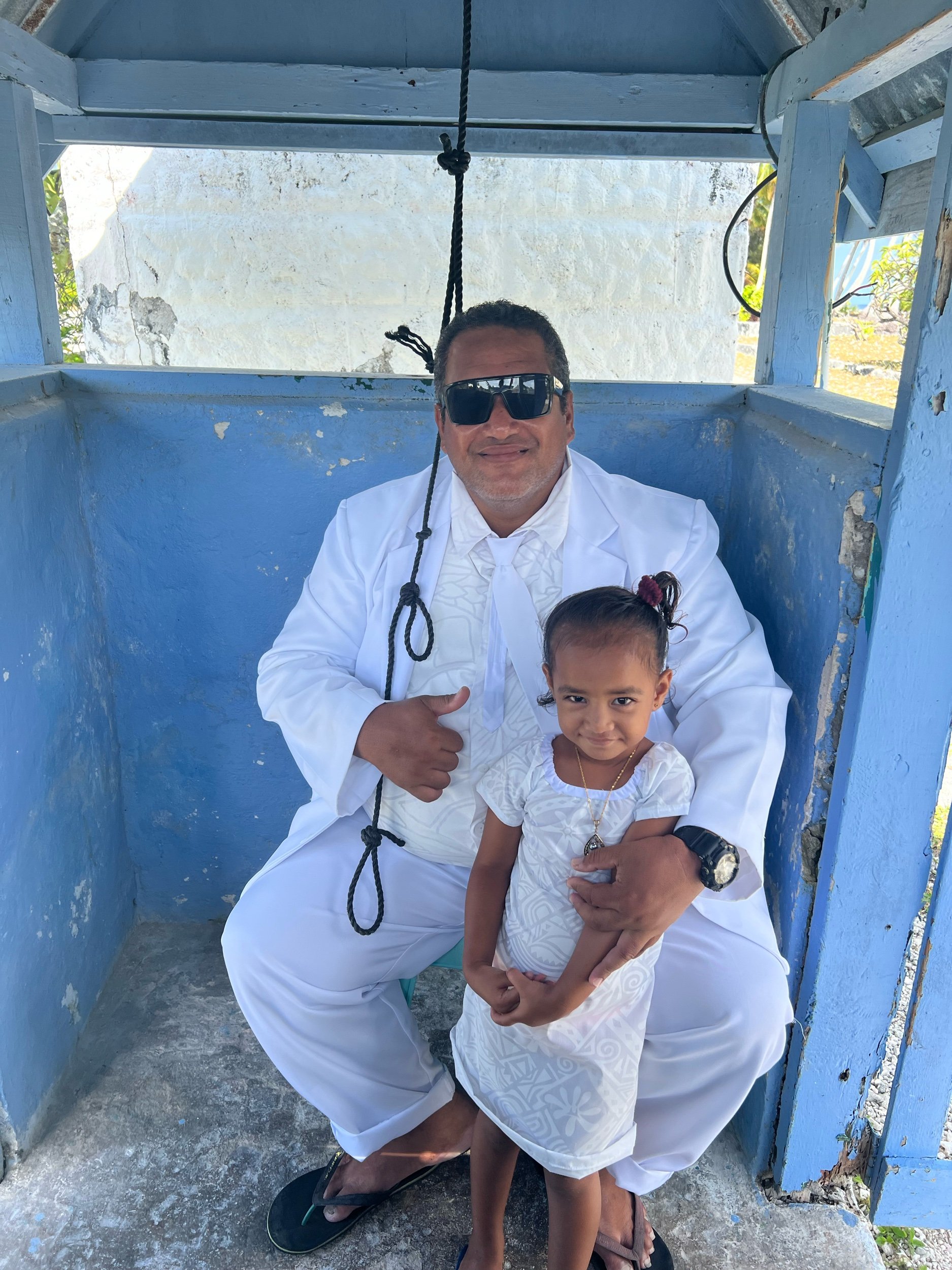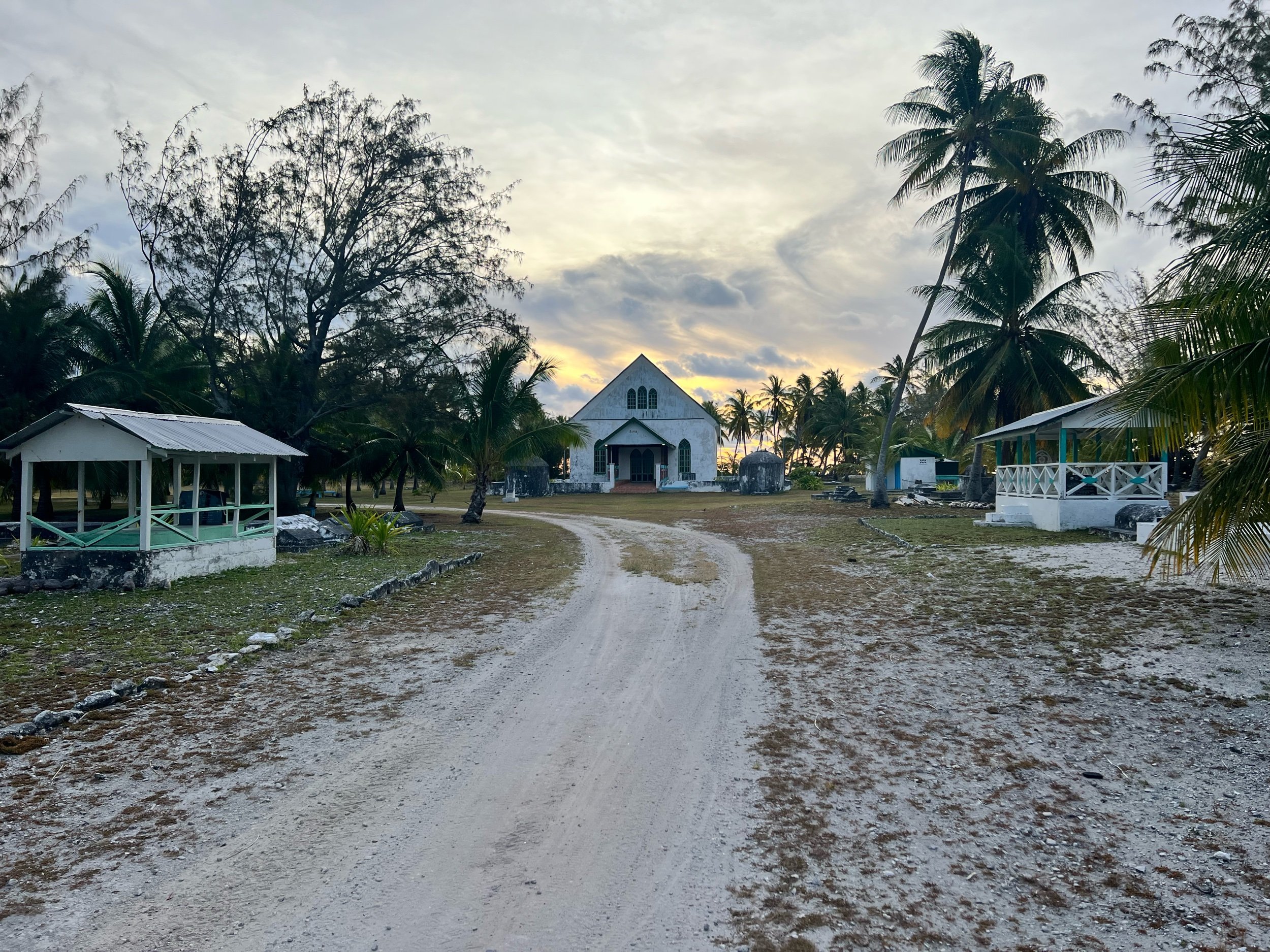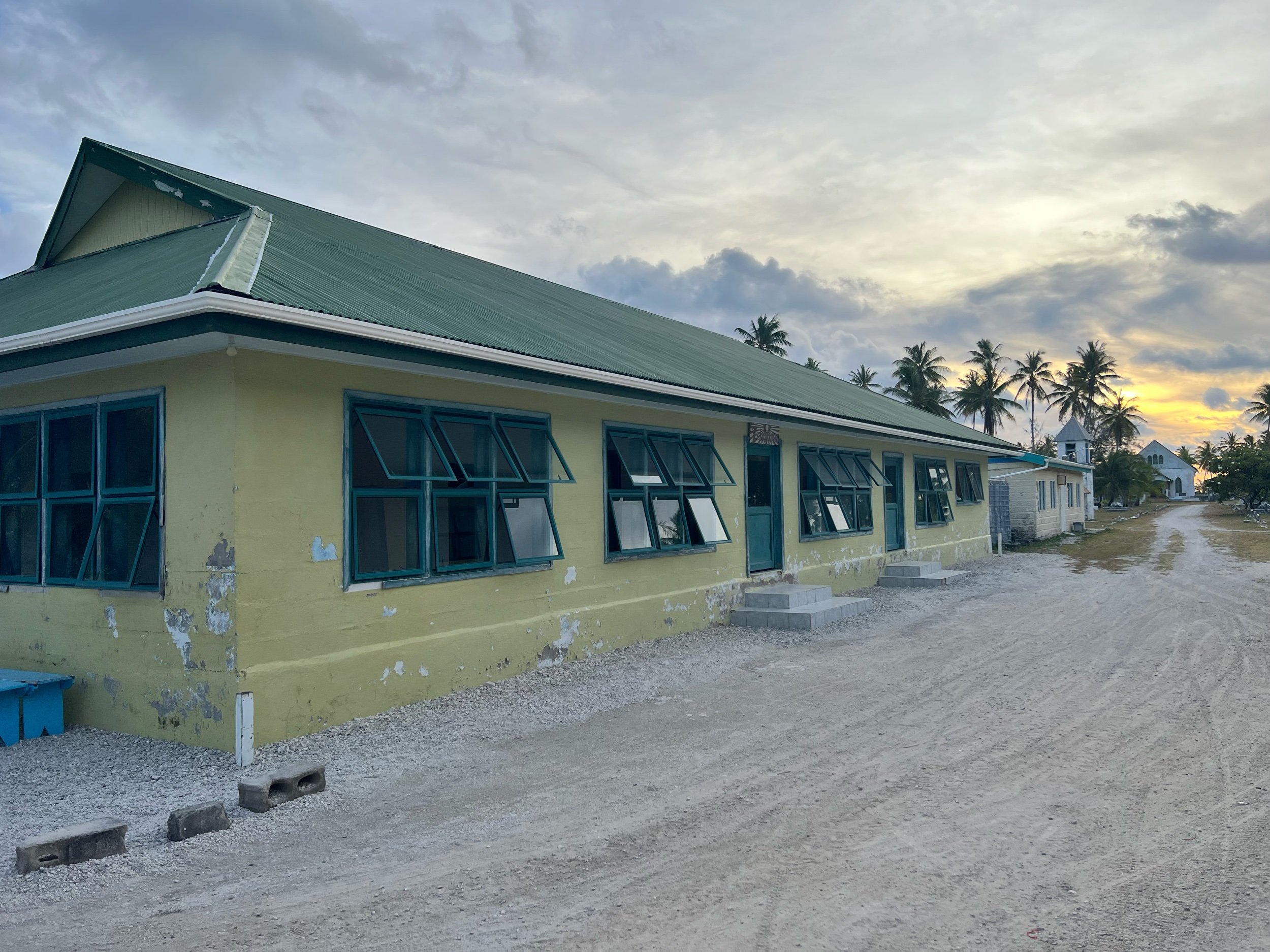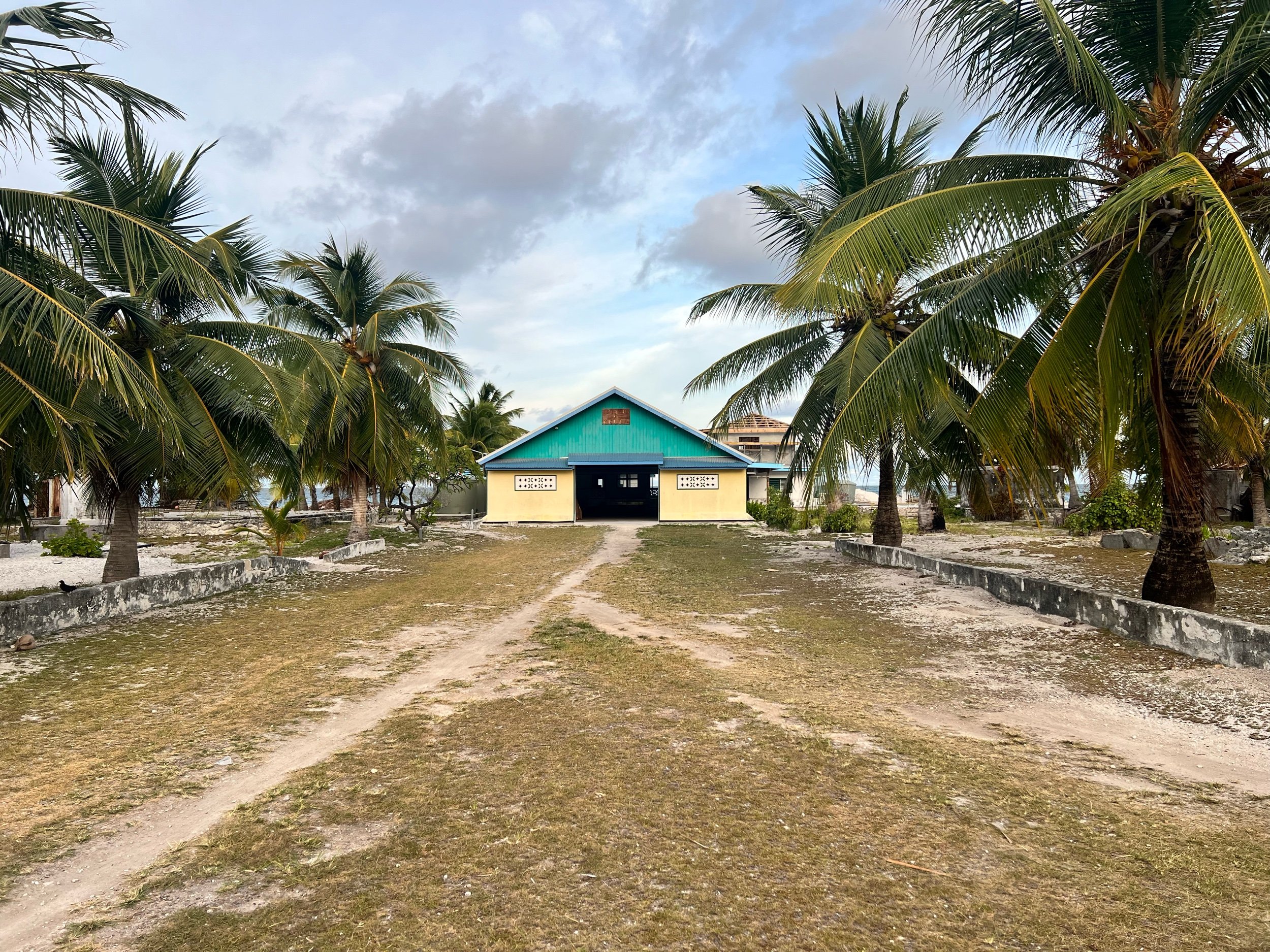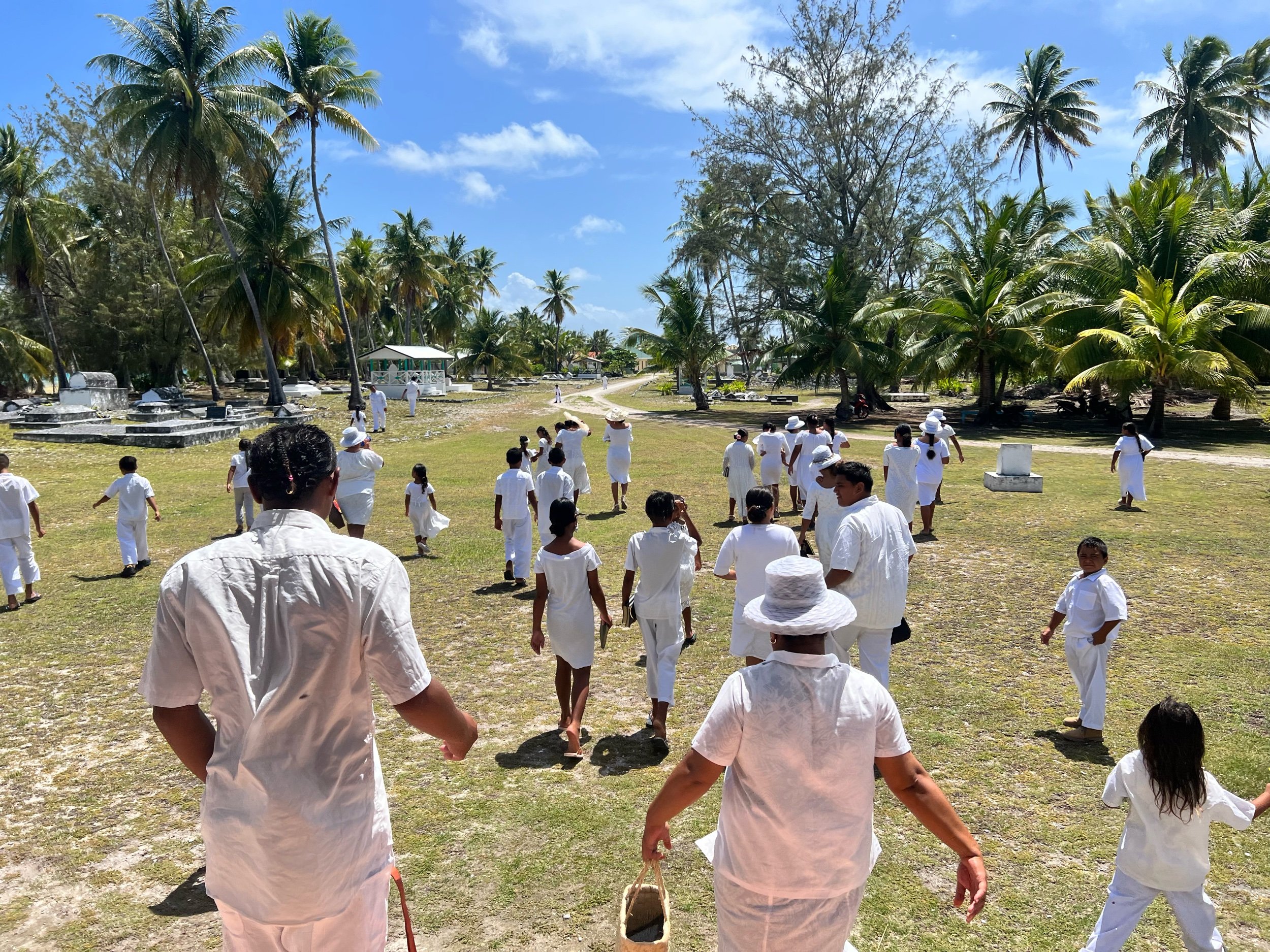Penrhyn Life Part 4 - The Church
“Here we all believe in God, that’s why everyone is happy.”
I did not for a second doubt the reverend’s logic.
What a pleasure it is, to be living in an isolated community where a place of worship and meditation, the Church, is the tallest building, and that it is no higher than the trees surrounding it. It would seem the priorities on Penrhyn are just about right. Needless to say, the people here are rather pious.
It all began in 1854 when three Polynesian missionaries were sent to Penrhyn. This was the beginning of a wholly new era, where the pagan traditions of the past were replaced with the Lord’s word, when waring chiefdoms on opposing motus were taught to love thy neighbour instead of killing them. What a remarkable and strange experience it must’ve been for all those involved. This pioneering work was carried out by the London Missionary Society, which established churches throughout the Cook Islands, as well as many other parts of the Pacific. Their work began in the Cooks in 1821, among the southern group islands, and in 1852 they founded the ‘Cook Islands LMS Church’. Eventually, in 1968, the church became autonomous under the new name of the ‘Cook Islands Christian Church’. There are now 24 ‘CICC’ churches in the Cook Islands, 22 in New Zealand and 15 in Australia. From this beginning, up until the present day, the Christian tradition on Penrhyn has held remarkably and admirably strong. I have read much debate about the morality of the missionaries, and of late their work is often brought into question. I like to keep an open mind about these things, however, it wasn’t until I came to Tongareva, and experienced it for myself, that I really began to appreciate the work that has been done and what a marked and positive impact it has had on the lives of the people. Nobody on the island would disagree.
From my interaction here I can only assume that the percentage of Christians on Penrhyn must be nearing 100%. There are three churches and the ruins of a fourth that is still cared for, not bad for an island with a population of about 200. Omoka has two churches, a large and well attended CICC church, as well as a smaller Catholic Church. Tetautua, the eastern village, is home to one CICC church; both villages have a Sunday school. The members of the CICC church attend up to five times a week. First on Wednesday morning at six o’clock, then Friday morning at six, and three times on Sunday; at six, ten and four. Sunday school is attended twice a week, before and after the ten o’clock and four o’clock Sunday services.
The leaders of both the CICC churches are Cook Island reverends who have studied at the theological college in Rarotonga. They are posted on four year terms throughout the Cooks, New Zealand and Australia. Sinaroa Teaurere, the reverend of the Tetoutua church has almost completed his tenure here, and will soon be moving to Western Sydney, what a change of lifestyle! Each new reverend who comes to Penrhyn is bestowed with a Penrhyn name, always quite poetic. In Omoka, Harry Rongo is known as Rangi Saruru - Thunder from the Sky.
As far as pleasant days go, I am yet to experience anything better than a Sunday on Penrhyn, any Sunday. As you already know, church is attended three times and Sunday school twice. In between everybody is homebound, enjoying lunch or resting The sabbath must be strictly observed, regardless of one’s faith. I once heard a woman say that “In some parts of the Pacific you can’t even take your boat out on a Sunday.” I was greatly impressed, that is, until I arrived on Penrhyn - where now I wouldn’t even dip my toes in the water on this most holy of days, and the thought of doing any form of boating or fishing now seems like a serious sin. This all means that Penrhyn Sundays have a most wonderful quality, the whole island seems at peace. So, you had better join me on one of these fine days.
The morning starts at 5:30 when our alarm goes off, it’s still black outside. We get dressed in our trousers and floral shirt, slip on our flip flops and ride our bike to church, we leave it standing up against a sheaoak with the other bikes. The faintest hint of purple is just visible in the east as we walk inside and take a seat on the wooden pew. There is an unofficial rule regarding seating. At the very back of the church are the mature folks of the island, they range in age from about 40 to 80. The rest of the church is then filled in from the front, starting with the youngest boys and girls, then followed by the young women, then the mothers, the young men and the fathers.
Penrhyn is interesting for many reasons, mostly due to its isolation. It has, therefore, developed some of its own rules, unwritten but strictly observed. One that relates to this story is regarding photography in the church, in short, it’s strictly prohibited. Therefore, I will do my best to describe, and you may do your best to imagine, this most beautiful of spaces. I will digress momentarily to relate another unique law here; the ‘no dogs rule’. Indeed, it is illegal for anyone to own a dog on Penrhyn, or even for a dog to step foot ashore. This of course does not pose any real issues, that is, until the occasional cruising yacht arrives with a pet dog. Now, with the ability of a yacht to moor quite close to the coral wharf here, on these very rare days, one can witness a rather comical scene of a restless dog running back and forth along the side decks, yapping and barking, obviously excited at seeing new land and people. Wonderfully, this image is perfectly mirrored with the island kids running back and forth along the wharf and carrying on just as excitedly as the dog.
Back to the church. Ziona, as it is named, is large and picturesque. When one walks inside they are greeted by two deacons who sit on plastic chairs either side of the entrance, a silent nod, smile or handshake is appropriate. Long trousers are part of the dress code, but shoes are optional. The deacons wear suits. One finds themselves inside a large and beautiful space, the floor is tiled, the walls are plastered and painted white and the ceiling is a wonderful multi tiered, semi-cylindrical shape clad with dark stained timber. There are many rows of very old wooden pews, these are set in from the walls of the church by a corridor encompassing the perimeter of the inside; a kauri balustrade separates the two. Looking forward, the front wall is adorned with the most amazing pulpit - semicircular, it’s perched many metres off the ground, and is accessed by steep carpeted wooden stairs on either side. Their angle is almost comical as it reaches the heights of the pulpit, which seems to be rather precariously hanging off the wall. More than once I have seen a deacon remove his flip flops before making the treacherous ascent.
By far the most wonderful feature of Ziona is the windows. Were it not for the church’s location, they would be rather uninspiring. However, this is not the case, so they instead become like looking glasses into a perfect scene. Each has a slightly different view, but all encompass the ever-bright blue sky, the rustling green coconut palms, and bright blue water. To stand in the middle of Ziona, alone, is to be transported to the centre of a kaleidoscope of greens and blues, of cool breezes and the sounds of surf breaking on the fringing coral reef.
As you may have guessed, the church services are conducted in Penrhyn Maori, so I am really not able to shed much light on what is being said, but a few notes of observation can be made about the fashion in which these services are conducted. Firstly, singing makes up a large portion of the hour long service. It usually starts with a loud solo from the back of the room, then, in order, the congregation rises and begins to sing. Everybody really gives it their all, the whole room reverberates and the two ancient chandeliers begin to sway ever so slightly. The singing is always followed by preaching, either by one of the twelve deacons or by the reverend himself. Despite the language barrier, little is lost on me. The power of the preacher, and his ability to transition from the deepest bellows and fist shaking to the gentlest of voices is remarkable and powerful. There is, however, sometimes a spattering of English amongst the Māori preaching, and I do wonder if it is put in just to test me. Forgive me for paraphrasing, but all too often I will be sitting in church, in a world of my own, with the Penrhyn preaching being just background noise to my meditation, when the preacher will cut the room with a knife by uttering, in perfect English, something along the lines of: “And the key to contentment and inner peace is….” and then will continue to divulge the secrets of the universe in Penrhyn Māori. So near yet so far away… Alas, I guess I will just have to keep searching for the answers myself.
I have attended church at least three times a week for the last three months yet still, every time, I am completely moved by the beauty and passion in the voices of every man, woman and child in the church. It is nothing short of breathtaking. And even when all is silent, and everybody prays, the sounds of the coconut palms rustling and the waves breaking on the coral reef outside never cease to remind me of just how special this setting is - a grand church with a devoted membership nestled on a tiny spec of paradise in the vast, empty Pacific. Breathtaking. My attendance is greatly appreciated, even after two months on Penrhyn, of attending church every week, my presence is still often acknowledged by a deacon, and I am often sincerely thanked for my attendance.
Sunday School is just as important for the young people of Penrhyn as the church. Twice on Sunday, an hour before church, and after, Lebanona, as it is called, is filled with bright, well dressed, smiling people aged from newborn up to about 40. School starts as soon as there are a few girls and boys in the room, then the first hymn is sung. As more children and adults file in, the Sunday school teacher begins a new hymn by calling out a girl’s name, the girl then begins a remarkable solo, a few seconds later the whole room erupts into beautiful bellowing harmonies. Eventually, the whole room fills and the entire group sings with all their hearts. There is no teaching as such; on Penrhyn Sunday school is purely about learning to sing! It is an individual choice as to when one retires from Sunday school and joins the older folks at the back of the church, however, this usually happens between ages 35-40. When it is eventually time to leave, the man or woman will leave the ‘Omoka Christian Youth’ group, and the responsibilities that go with it, and will take on a new role in the church. At the conclusion of Sunday school, as the giant brass bell is being rung, the group files out of Lebanona and onto the sand road. A single file line forms, with the youngest and shortest at the front, leading to the tallest, middle aged men at the rear. This single file line snakes towards Ziona. The young children giggle and play in the front while the young men roll cigarettes and share them around at the back. By the time the youngest child has made their way to the door of the church, the fathers at the back of the line are still only halfway there. Eventually everyone files inside and sits quietly. Any misbehaviour is not tolerated in church, save for the odd child crawling under the pews from one parent to another. In fact, if a baby begins to cry, which always happens at least once or twice every service, the mother or father must leave immediately with that child. Phones are not allowed out of one’s pocket in the church, eating is strictly forbidden, as is anything else that does not pertain specifically to the worship of Christ.
Penrhyn Sundays are made all the more special by the outfits. The men must wear long trousers and a button up shirt, and the women wear dresses. The majority of the clothing is sewn on the island, and is modest, colourful and neat, all the women wear beautiful hats and handmade colourful dresses. Most women will wear three different dresses and three different hats on Sunday for each of the three services. The first Sunday of each month is ‘White Sunday’ where the whole congregation must wear all white to the ten o’clock service, including white suits for the deacons. The whole scene is nothing short of angelic. The second Sunday of each month features the other youth groups; the Boys Brigade, Girls Brigade and Girl Guides. Every young person in Omoka is a part of one of these groups, and before the ten o’clock service they are all at Sunday school preparing for the monthly march to church. The whole scene is the antithesis of what I expected to find on a remote Polynesian atoll; peaked caps, lanyards, sashes, flags, drums and a brass band - just marvellous. Uniquely Penrhyn are the handwoven Girl Guides Rito hats and the Girls Brigade Rito side caps. Woggles for the girl guides are often hand carved from coconut or pearl shell - remarkable. This procession then makes its way into the church, flags are dipped as their bearers enter the room, the brass band stops, and everyone files in for another service.
As you can understand, the church is not just a building or a ritual, on Penrhyn, the Christian faith permeates every facet of life, from home to school to work and everything in between. Even the arrival of a plane must include a prayer from the reverend and singing, to welcome the new arrivals. The people are united by a common path and belief, they share a level of love and compassion through God that is oh so rare in my culture. It is a testament to the people of Penrhyn that they hold so strongly to their beliefs, rituals and faith in God. Perhaps one day my people will see the error in our ways, maybe we will stop building and start worshipping.




